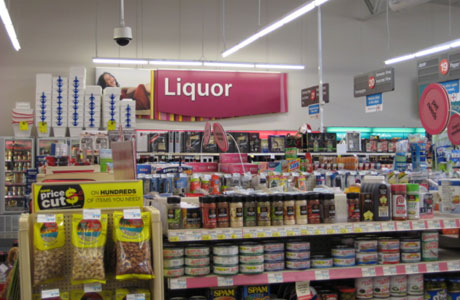By BY JON LANGFORD
Published by BBC America
2014
In Britain, one would pop to the chemist to tend to their everyday ailments, whereas in America, you’d swing by the more dangerous sounding “drugstore” to get your meds. In principle, the two serve the same purpose, but there are many differences between the British and American pharmaceutical experience.
American drugstores moonlight as convenience stores
The fundamental difference between U.S. and U.K. pharmacies is that in the States, the establishments masquerade as general convenience stores where you can get everyday essentials like cat food, cockroach traps and Christina Aguilera’s new fragrance, 24 hours a day. In Britain, on the other hand, the chemist remains a place one doesn’t want to frequent, because if you’re there, it’s to pick up a prescription.
Drugstores in the U.S. are fun for all the family
In America, pharmacies are huge, kid-friendly places with shelves stacked full of crappy plastic toys and just about every conceivable candy bar. It is not a place little ones fear; on the contrary, a trip to Rite Aid is met from the backseat with a whoop or two of delight. Chemists in Britain, however, have bored-looking, sometimes weepy, always snotty children fidgeting in chairs while their mum waits for the prescription to cure their snottiness (and hopefully their fidgets too). The only saving grace for these poor little cherubs is the promise of a lollipop (that for some reason also functions as a whistle before it’s sucked on too much) if they keep their whining to a minimum.
You can get things in Walgreens you’d never get in Boots
“They sell cigarettes and alcohol in a chemist?!” That was the medical paradox set before my fresh-off-the-boat eyes during my inaugural visit to a U.S. pharmacy back in the summer of 2007. And frankly, it scared the Brit out of me. How could a store, that by definition exists to sell medicine to sick people, be trading in products that could ultimately kill them? It seemed so unethical.
Fast-forward to present day New York City, and the only time I ever have occasion to use the word “chemist” is if I’m visiting a laboratory. Which is never. It’s “drugstore” now. And I take the convenience of being able to nip there to pick up a six-pack of Heineken for granted.
You say tomato…
As far as everyday pharmaceutical products are concerned there are some classic nuances between American and British names for the same thing. I remember the first time I asked an American for a plaster. Nothing. Zip. Nada. After explaining that I required a small dressing to cover a minor scrape, I was informed that what I needed was a Band-Aid. The charity supergroup formed by Bob Geldof and Midge Ure? No, the brand name term generically used in the U.S. for an adhesive bandage.
Then there was the time I went into a Duane Reade and asked where they kept the Deep Heat. Looking back, I think the cashier thought I was inquiring where I might find the guns. I clarified that I was only interested in purchasing a menthol muscle rub and the cashier told me he had some Ben-Gay on aisle nine. And then I was the confused one.
Possible side effects
Generally speaking, in Britain you need a prescription for something that might actually work, whereas in America, you have the freedom to dose yourself with all kinds of exotic drugs that could have all manner of ludicrous possible side effects. A recent infomercial for a new drug to combat the common cold listed the following: temporary psychosis, gambling addiction, enlargement of the feet, yellowing of the skin and eyes, and, in severe cases, an inexplicable penchant for ‘80’s rock ballads.
Different products
Although I miss not being able to readily get my Britpaws on certain chemist staples—Lucozade, Migraleve, Vaseline lip balm in a tin (which melts in the blistering heat of a New York summer anyway)—there are some American products for which I’m grateful and former expat pals always ask me to bring them when I visit England, a list which includes Neosporin, melatonin, and Crest whitening strips, to name but three items.
Melatonin is an interesting case in point. In most of North America it is sold over-the-counter as a dietary supplement and not as a drug. Whereas in the U.K., it is available only on prescription as the European Economic Community (EEC) hasn’t passed it for safe use because not enough is known about the long-term effects of prolonged consumption. But then pharmacies in America have to offer a wide range of strong over-the-counter drugs so that the 40 million+ people living here without health insurance have access to medicine without having to first consult a doctor.
Source: https://www.bbcamerica.com/anglophenia/2013/10/6-differences-american-drugstores-british-chemists
Analysis:
As I’ve been conducting my research on my focus groups, I’ve noticed that the environment plays a big role in how we act. In fact, in this week’s assigned readings we learn that the same person will act differently in different environments, depending on what is presented in that environment. I sought out an article that could give me some firsthand insight into the difference between pharmacies in the US vs. the UK. This article does a good job in explaining that American drugstores are seen as friendly one-stop shops that have expanded past the point of pharmacy, and are now places to go to get everything. Even things that are not good for our health can be found in US drugstores which seems a bit contradictory. Yet, with this friendliness it seems that going to the drugstore in the US might be more desirable; you may have more of an incentive to get up and go.




